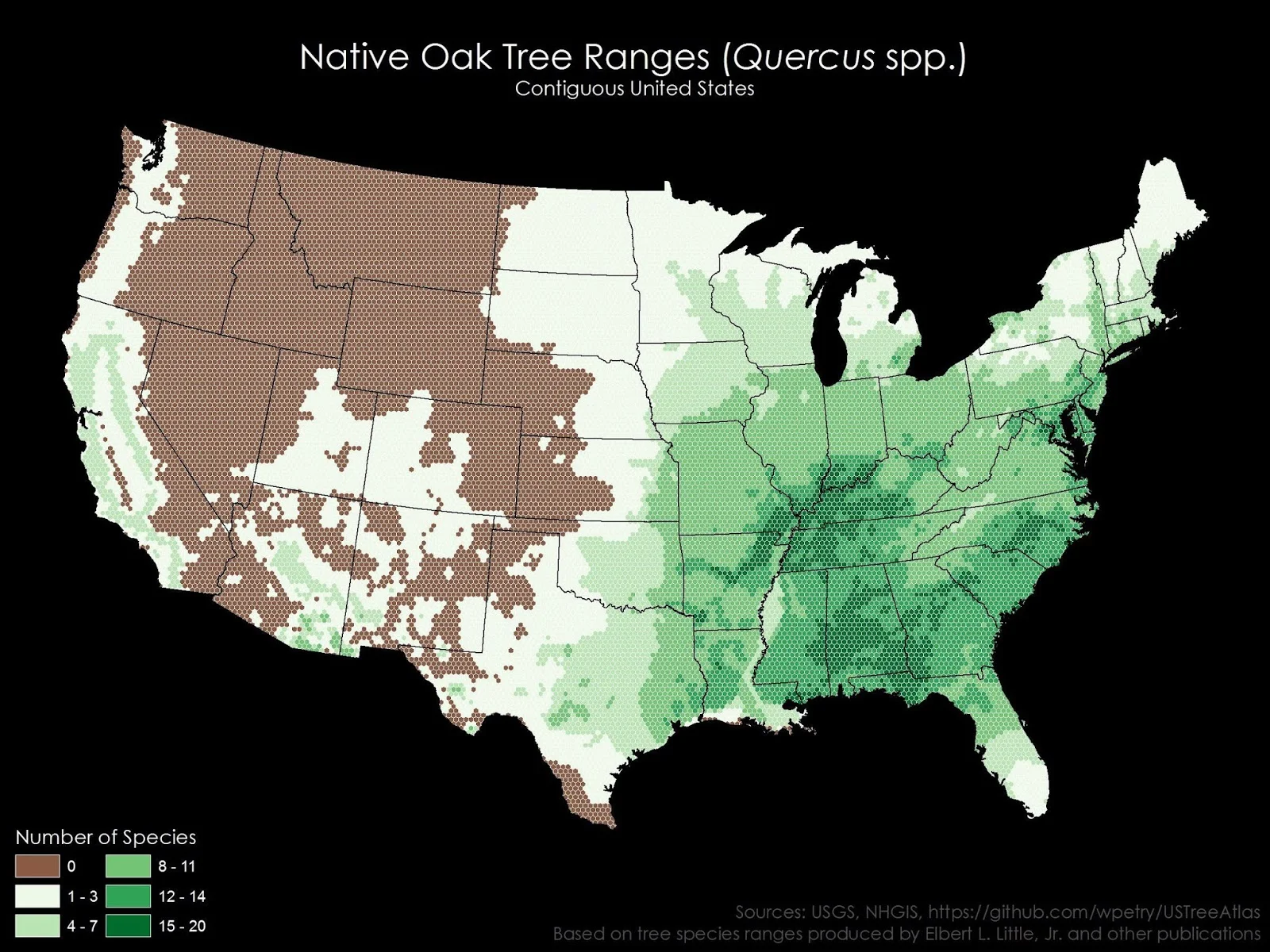Oaks are principally temperate zone trees or shrubs, estimating about 600 species globally. Oaks have remained on the non-glaciated territories of North America following the Cretaceous Period.
According to the U.S. Forest Service, 50 oak species are represented in 2/3 of the eastern North American wood cover types and dominate 68% of hardwood forests (77 million hectares or 191 million acres).
Reddit user: BRENNEJM. Data: http://github.com/wpetry/USTreeAtlas
Oaks of the United States
Quercus alba
Quercus arizonica
Quercus arkansana
Quercus bicolor
Quercus chapmanii
Quercus chrysolepis
Quercus coccinea
Quercus douglasii
Quercus dunnii
Quercus durandii
Quercus ellipsoidalis
Quercus emoryi
Quercus engelmannii
Quercus falcata
Quercus gambelii
Quercus garryana
Quercus georgiana
Quercus glaucoides
Quercus graciliformis
Quercus gravesii
Quercus grisea
Quercus havardii
Quercus hypoleucoides
Quercus ilicifolia
Quercus imbricaria
Quercus incana
Quercus kelloggii
Quercus laevis
Quercus laurifolia
Quercus lobata
Quercus lyrata
Quercus macdonaldii
Quercus macrocarpa
Quercus marilandica
Quercus michauxii
Quercus mohriana
Quercus muehlenbergii
Quercus myrtifolia
Quercus nigra
Quercus nuttallii
Quercus oblongifolia
Quercus oglethorpensis
Quercus palustris
Quercus phellos
Quercus prinus
Quercus pungens
Quercus rubra
Quercus rugosa
Quercus shumardii
Quercus stellata
Quercus tomentella
Quercus toumeyi
Quercus turbinella
Quercus velutina
Quercus virginiana
Quercus wislizeni
The invasion of urbanization, agriculture, and hydrologic projects continue to affect oak forest types negatively. Such influences may require the establishment of preservation areas for vulnerable species.
In the southern U.S., forest management methods prefer conifers displacing hardwood forests in rich bottomlands. A new cause of concern includes the threat of displacement of native oaks by different exotic species. Moreover, forest types are placed at risk by introducing not only non-native plants but insects and diseases.
In 1997, a fungal pathogen (Phytophthora ramorum) was known as the cause of the Sudden Oak Death in California. Searching for potential hosts has found some sensitive species of eastern red oaks. Additional susceptible hosts include commercial nursery stock, which enhances the chance of the Sudden Oak Death expanding to eastern North America.

This post may contain affiliate links. As an Amazon Associate, I earn from qualifying purchases.